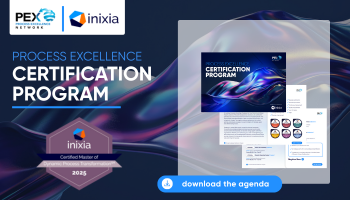Gartner identifies 5 critical generative AI blind spots
Gartner urged business leaders to address hidden challenges to ensure generative AI value realization and avoid AI project failures
Add bookmark
Gartner has identified five critical blind spots stemming from overlooked risks and unintended consequences of generative artificial intelligence (AI) adoption. The analyst giant urged business leaders to address these hidden challenges to ensure generative AI value realization and avoid AI project failures.
Gartner predicts that by 2030 these blind spots will create the dividing line between enterprises that scale AI safely and strategically and those that become locked in, outpaced, or disrupted from within.
The PEX Report 2025/26 found that 63 percent of organizations currently use generative AI to support business transformation strategies. Meanwhile, 58 percent are planning to invest in generative AI in the coming year.
Join the PEX Network community

Don't miss any news, updates or insider tips from PEX Network by getting them delivered to your inbox. Sign up to our newsletter and join our community of experts.
Learn More5 critical generative AI blind spots
The critical generative AI blind spots identified by Gartner span shadow AI, technical debt, data and AI sovereignty, skills erosion, and ecosystem lock-in/interoperability.
“Generative AI technologies and techniques are evolving at an unprecedented pace, matched only by the surrounding hype, which makes it challenging for CIOs to navigate this dynamic landscape,” said Arun Chandrasekaran, distinguished VP analyst at Gartner.
1. Rise of shadow AI
A Gartner survey of 302 cybersecurity leaders found that 69 percent of organizations either suspect or have confirmed that employees are using prohibited public generative AI tools. The rapid spread of unsanctioned AI introduces both visible and hidden risks, including intellectual property loss, data exposure, and broader security vulnerabilities.
Gartner forecasts that by 2030, more than 40 percent of enterprises will face security or compliance incidents stemming from unauthorized shadow AI.
“To address these risks, CIOs should define clear enterprise-wide policies for AI tool usage, conduct regular audits for shadow AI activity, and incorporate generative AI risk evaluation into their SaaS assessment processes,” said Chandrasekaran.
2. AI technical debt
According to Gartner, by 2030, 50 percent of enterprises will encounter stalled AI upgrades or higher maintenance expenses due to unchecked generative AI technical debt.
“Enterprises are excited about generative AI’s speed of delivery. However, the punitively high cost of maintaining, fixing, or replacing AI-generated artifacts such as code, content, and design can erode generative AI’s promised return on investments,” said Chandrasekaran.
By establishing clear standards for reviewing and documenting AI-generated assets and tracking technical debt metrics in IT dashboards, enterprises can take proactive steps to prevent costly disruptions.
Register for All Access: AI in PEX 2026!
3. Demand for data and AI sovereignty
By 2028, 65 percent of governments worldwide will introduce some technological sovereignty requirements to improve independence and protect from extraterritorial regulatory interference.
Cross-border data and model-sharing regulations can delay AI rollouts, increase TCO, and produce less-than-optimal outcomes. To address these challenges, leaders must build data sovereignty into their AI strategies from the start by engaging legal and compliance teams early on and prioritize vendors who meet their data and AI sovereignty requirements, Gartner stated.
4. Skills erosion
Over-dependence on AI can diminish vital human expertise and knowledge. This decline is often subtle, leaving leaders unaware until the enterprise falters without AI or faces edge cases that demand human judgment.
“To prevent the gradual loss of enterprise memory and capability, organizations should identify where human judgment and craftsmanship are essential, designing AI solutions to complement, not replace, these skills,” Chandrasekaran said.
Join us at All Access: Agentic AI 2026!
5. Ecosystem lock-in and interoperability
Enterprises seeking to scale AI quickly often opt for a single vendor to gain speed and simplicity. However, this level of dependency can limit technical agility and weaken future negotiating leverage on pricing, terms, or service levels.
Many leaders underestimate how tightly their data, models, and workflows can become coupled to vendor-specific APIs, data stores, and platform tools.
“Prioritizing open standards, open APIs, and modular architectures in AI stack design help enterprises avoid vendor lock-ins,” said Chandrasekaran. “In addition, CIOs must make interoperability a standard in generative AI pilots and assessments.”
Professional Process Excellence Certification Provided by Inixia in Partnership with PEX Network

Designed for today’s fast-paced, competitive business landscape, this certification signals a deep capability in operational excellence and innovation. It enables professionals to lead process transformation across functions and industries, and become change agents within their organizations. Whether you're advancing your career or strengthening your team’s performance, the Certified Master of Dynamic Process Transformation provides a forward-thinking, results-driven approach to creating sustainable value and long-term success.
Learn More



















